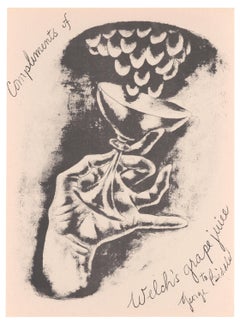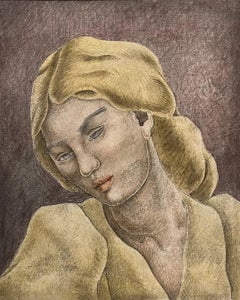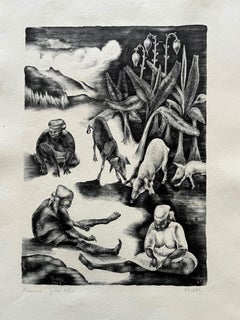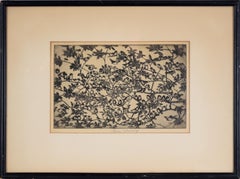George Biddle Art
Born to a prominent family in Philadelphia on January 24, 1885, George Biddle put his interest in art aside to accommodate his family's wishes and study law. He graduated from Harvard University in 1908 and Harvard Law in 1911, becoming a member of the Philadelphia bar. However, by the end of that same year, Biddle abandoned law and began studying art at the Académie Julian in Paris. Biddle continued his studies at the Pennsylvania Academy of Fine Arts during 1912 and 1913. He returned to Europe in 1914, studying in Munich and then in Madrid, where he studied printmaking. Biddle also spent the summers of 1915 and 1916 painting Impressionist works in France before he enlisted in the army in 1917. Following World War I, Biddle experimented in sculpture and graphics in Tahiti for two years and then in France between 1924–26. In 1927, Biddle returned to the United States settling in Croton-on-Hudson, New York. The following year, he traveled through Mexico on a sketching trip with Mexican muralist, Diego Rivera. During the Great Depression, Biddle actively sought government funding for the arts. His correspondence with President Franklin D. Roosevelt, who was a former classmate at Groton Preparatory School and Harvard, resulted in the establishment of the Federal Arts Project of the Works Progress Administration. The Depression fueled Biddle's desire to create socially conscious art. He established himself as a Social Realist through powerful murals depicting poverty. The Tenement, which he created in 1935 for the Department of Justice Building in Washington, D.C., was his first federally commissioned mural. The project led to controversy as people deemed his depiction of poverty to be inartistic. In addition to his artwork, Biddle authored several art books including An Artist at War and An American Artist's Story and he contributed regularly to national art magazines. In 1937, Biddle wrote the introduction for Boardman Robinson: Ninety-Three Drawings which was published by the Colorado Springs Fine Arts Center, where he taught in 1936 and 1937. In addition to teaching in Colorado, Biddle later taught at the Otis College of Art and Design in Los Angeles, the American Academy in Rome and Saugatuck, Michigan. He served as a chairman of the U.S. War Artists Committee during World War II and in 1950, President Truman appointed him to the Fine Arts Commission for which he served a 14-year term. Biddle died on November 6, 1973, in Croton-on-Hudson.
1950s George Biddle Art
Lithograph
1930s American Modern George Biddle Art
Plaster, Mixed Media
1920s American Realist George Biddle Art
Lithograph
1920s Realist George Biddle Art
Lithograph
1920s Realist George Biddle Art
Lithograph
1920s American Realist George Biddle Art
Lithograph
1980s Realist George Biddle Art
Lithograph
Early 20th Century Impressionist George Biddle Art
Paper, Ink, Lithograph
Mid-20th Century Realist George Biddle Art
Engraving
1990s American Realist George Biddle Art
Lithograph
1990s Realist George Biddle Art
Lithograph
1910s American Realist George Biddle Art
Lithograph
1930s American Modern George Biddle Art
Oil, Board
Mid-19th Century Naturalistic George Biddle Art
Lithograph
1980s Realist George Biddle Art
Lithograph
1990s Realist George Biddle Art
Lithograph
Late 20th Century Realist George Biddle Art
Paper, Lithograph
1940s American Modern George Biddle Art
Lithograph
20th Century American Modern George Biddle Art
Oil
1940s American Modern George Biddle Art
Canvas, Oil
1920s Realist George Biddle Art
Lithograph
1930s American Modern George Biddle Art
Lithograph
1920s American Modern George Biddle Art
Lithograph
1930s American Modern George Biddle Art
Gouache, Rag Paper, Ink, Watercolor
1920s American Realist George Biddle Art
Lithograph
1930s American Modern George Biddle Art
Oil







